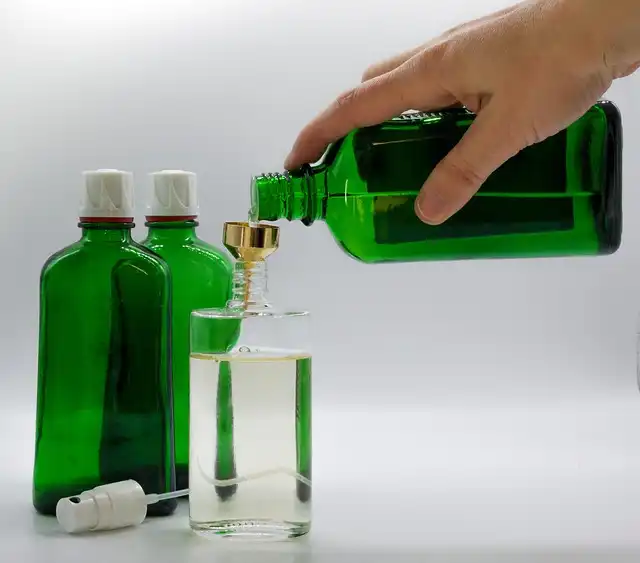Foundstock Standard: Defining & Reusing Deadstock for Sustainability

Aloqia's Foundstock Standard aims to define 'deadstock,' incentivizing reuse and combating greenwashing. It tackles the lack of clear definition and encourages sustainable practices in the fashion industry. Focus on transparency and traceability.
Depending upon the degree of traceability and the documents provided along with deadstock products, brands utilizing the requirement will be granted silver, platinum or gold condition. Most importantly, certified foundstock can only be cost the exact same cost or reduced, to avoid incentivising brand names to generate deadstock commercial.
The platform is open to the entire market, for a yet-to-be-determined fee, and business do not need to be an Aloqia client to access. Both organisations will certainly continue to be different lawfully and financially, Benedetto states.
Defining Foundstock: Aloqia’s Approach
Aloqia’s recommended interpretation of “foundstock” is currently a 20-page functioning file– offered completely on the requirement’s new web site– which will be reviewed and updated by its advisory board and independent bookkeeping companions over the next six months. At its core, foundstock is specified as unused, pre-consumer fabric products such as threads, fabric rolls or raw goods that were generated yet never ever made use of, delivered or marketed. This additionally includes incomplete products that were developed for a details objective, however were set aside or discarded prior to fulfilling that purpose, and have actually been held in storage for at the very least 90 days.
A big part of the issue is that deadstock does not have a main interpretation, claims Stephanie Benedetto, co-founder and chief executive officer of supply management platform Aloqia (formerly deadstock market Queen of Raw). On 5 September, Aloqia is introducing a brand-new platform called the “Foundstock Standard” in an effort to establish a consensus on what specifically deadstock is, and incentivise its reuse. Central to its job is reframing waste as a resource, as opposed to “dead”.
There is extent for the definition to notify more dynamic policies in future and elevate the market’s passion, she adds. “Without a clear interpretation, how are you going to measure, record and adhere to regulatory needs going forward?”
The Greenwashing Risk and Deadstock
Meanwhile, despite some flip-flopping by the European Commission– mostly pertaining to just how widely brand-new regulations ought to use– the risks for greenwashing are just obtaining higher. Shein was just recently hit with a EUR1 million penalty for greenwashing (it stated it took instant action to resolve the concerns raised and has actually improved its internet site to guarantee that all environmental claims are compliant with policy). And as of April 2025, the UK watchdog, the Competitors and Markets Authority (CMA), has the power to fine services up to 10 per cent of their worldwide turnover for greenwashing.
And for US brand names, there’s an additional motivation to make use of and determine deadstock: with tariffs making it more hard and expensive to import items, fashion industry are considering what is currently readily available domestically. While the US has restricted resources ideal for style production, what it has in wealth is waste, of which deadstock makes up a substantial percentage.
“That procedure included smaller sized and larger companies, right from mass market to high-end, spanning from Europe to Asia, and also encompassing provide chain companions of the brands entailed,” discusses Benedetto. “It’s very essential to us that every one of those voices are listened to.”
The pilot programmes have a whole lot of kinks to work out, consisting of the specific charges for qualified brands and whether brands will certainly be able to repurpose all of the deadstock they find. Exactly how this functions in method– particularly when deadstock appears in little pockets all over the globe, usually hidden deep in supply chains– will be figured out during the pilots.
The names of consortium participants will certainly be maintained under wraps up until the general public consultation (which goes online today) closes prior to the end of the year. This is to prevent biasing public opinion on the requirement, at the recommendation of Control Union and Peterson. As soon as the consultation is total– likely in the new year– Aloqia will certainly reveal the requirement’s consortium companions, consultatory council and pilot programmes.
If these questions are answered, a unified standard could help unlock development and aesthetic waste, states Benedetto. “The meaning of deadstock was a massive white room,” she clarifies. “The concept for the pilots is to figure out whether the meaning we have actually come up with really functions. Which aspects are as well easy or too tough to satisfy? What requires to change to make sure that everybody can get involved?”
Harmonised Definition Demand
The demand for a harmonised interpretation is clear. Brand names marketing right into the European Union will certainly quickly need to consider what takes place to their products post-purchase under the brand-new prolonged manufacturer responsibility (EPR) rules. The round infrastructure called for to abide will create meaningful avenues for waste at every stage of the supply chain, including deadstock, most of which is presently re-selled, wasted, sent out to garbage dump or incinerated.
Aloqia has clear risks in the video game. Initially founded as Queen of Raw in 2014, the US-based company rebranded in 2024 to reflect its growing B2B organization, developing software program that allows brand names such as Nike, Ralph Lauren and Victoria’s Secret to take care of excess materials at range.
In 2022, Aloqia announced a controversial partnership with Shein, which it says has assisted the ultra-fast style giant divert over 32,000 metres of deadstock material. Movie critics questioned whether the use of deadstock fabrics from various other brand names was sufficient to balance out the waste produced by Shein’s wider organization design, and elevated problems over how the use of deadstock was marketed, pointing out how difficult it is to make reputable cases regarding the virgin resources displaced by using deadstock without precise lifecycle evaluations.
She likewise stresses that, while Aloqia prompted the Foundstock Requirement and has been driving its rollout, a lot of the backstage work has actually been embarked on by third-party auditors Control Union and Peterson. The procedure started with a landscape analysis of existing rules and regulations around deadstock, highlighting the lack of a standardised definition. The auditors talked to reps from Aloqia and a varied consortium of fashion brand names to understand the various definitions currently at play, and usual factors of fracture.
Aloqia, previously Queen of Raw, is wanting to make deadstock extra clear and traceable with its brand-new Foundstock Criterion. The utmost goal is to drive reuse and reduce waste.Photo: Lluis Genetics using Getty Images
Objection of deadstock has actually been placing in current years. There is additionally a dispute around how long products need to be rested unused before being thought about deadstock, when in the production journey those products ought to be obstructed, and to what degree using deadstock can be marketed as a sustainability play.
Transparency and Traceability
At initial glance, fashion brand names working with deadstock materials is a rare win-win for both the earth and the industry’s profit margins. When deadstock– or unsellable supply– is repurposed, it quits the ecological damage utilized to produce those products from going to waste, and in an optimal world, also displaces virgin products. There is likewise an argument around exactly how lengthy materials need to be sat extra prior to being taken into consideration deadstock, when in the manufacturing trip those products ought to be intercepted, and to what level using deadstock can be marketed as a sustainability play. A big component of the problem is that deadstock does not have an official definition, states Stephanie Benedetto, co-founder and Chief executive officer of inventory administration platform Aloqia (previously deadstock market Queen of Raw). Some will centralise their deadstock for internal reuse, while others will determine deadstock to market it on.
At first glimpse, style brands collaborating with deadstock materials is a rare win-win for both the industry and the planet’s profit margins. When deadstock– or unsellable inventory– is repurposed, it stops the environmental damage utilized to create those materials from going to waste, and in a perfect globe, likewise displaces virgin products. On the economic side, brands are able to recoup several of their losses from overflow and prevent sending out pricey materials to land fill or incineration.
When the pilot programmes come into play, taking part brand names will road-test the standard’s qualification and platform. Some will centralise their deadstock for internal reuse, while others will determine deadstock to sell it on. Either transparency, method and traceability will be crucial, states Benedetto, keeping in mind that the Foundstock Requirement will certainly likewise check how much deadstock business are creating and whether this lowers in time.
Benedetto says the marketing of brand name collaborations is beyond Aloqia’s remit, yet the Foundstock Standard will certainly include best methods on just how to communicate making use of licensed products. She additionally keeps in mind that wider company techniques will be constructed into the Foundstock Criterion’s three rates. While the precise information will be ironed out throughout the pilot phase, the idea is that brand names with worse social and environmental effects outside of their use of deadstock will certainly be rejected the qualification, or covered at reduced tiers, depending on extent.
1 Aloqia2 deadstock
3 fashion industry
4 fashion sustainability
5 Foundstock Standard
6 reuse
« Pepsi’s NFL Tailgate Crash: Targeting Fans & Market ShareRachel Scott: Proenza Schouler’s New Creative Director »
